14 Examples of Event Goals and Objectives for Your Next Virtual Event

Table of Contents
Maximize Your Marketing ROI
Join 10,000 other marketers already getting the best tips on running engaging events that boost pipeline and create raving fans.
Anyone who’s ever experienced the post-closing buzz of a high-impact event knows the magic they hold. But over the years, the struggle to prove your worth as an event marketer has been very real.
Because, unlike sales who can share tangible closed-won numbers or customer success who can calculate upsell and renewal stats, event marketing has never had a black and white way of calling out success.
Until now. With data-driven technology establishing its place in the modern event marketing playbook, event marketers finally have the insights they need to prove their value and increase buy-in for their biggest and boldest ideas.
But while access to data is a beautiful thing, it’s nothing without the right event goal to tie it back to.
Check out these 14 clear examples of event goals and objectives to help plan your next big win!
Here’s what we’ll cover:
- The dos and don’ts when setting clear event goals
- Top-of-funnel event goals
- Middle-of-funnel event goals
- Bottom-of-funnel event goals
First, here’s what NOT to do when setting your event goals
When setting event goals, a lot of us fall into the same old traps. That’s why the best place to start is to think about what not to do.
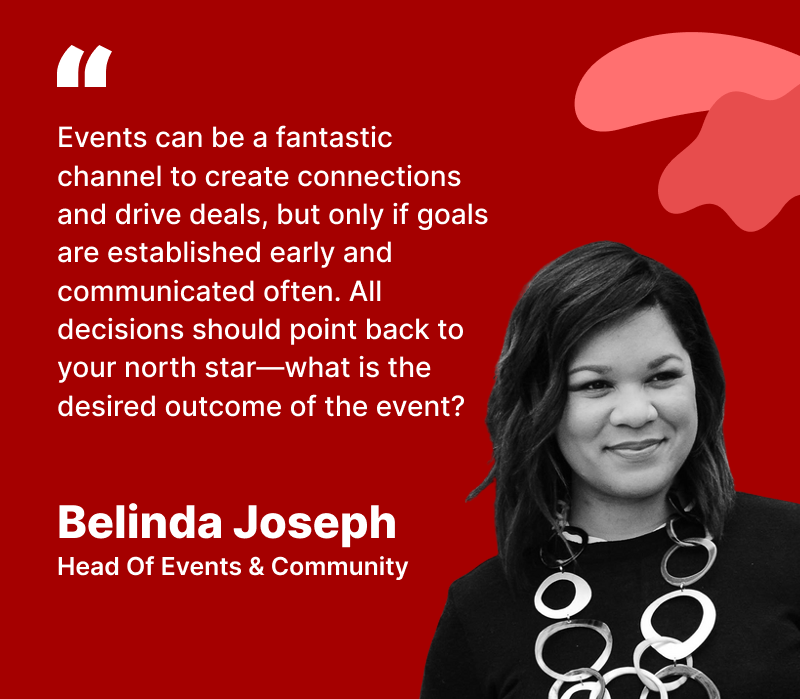
Here’s a quick refresher on the three main pitfalls to steer clear of when setting your virtual event goals, plus two crucial tips to keep in mind at all times.
❌ Not knowing your “why”
Before you start planning any event, it’s crucial you know exactly what you want from it — a.k.a. your big ‘why.’
Why do events matter? What motivates you to keep plugging away to make them epic? What value do they hold for your customers?
Consider reasons like:
- To solve a customer pain point with a solution that works
- To educate customers on an important topic
- To make customers’ lives easier
Whatever your 'why’ is, be sure that all of your events goals and objectives are working to help achieve them.
❌ Going too big (or too small)
A major part of the event goal-setting process is establishing the right expectations.
If you’re short on time, budget, and support, your goals are going to be very different from those of an event that’s had weeks of investment and a team of 20 people behind it.
If you don’t believe from the outset you can achieve your goals, don’t be afraid to scrap them and start over.
Remember, your event objectives don’t have to be set in stone. If a goal feels too big or small, it’s ok to change it.
❌ Not aligning with your overall marketing goals
The goal of marketing is to build a connection with your target audience and generate revenue for the business.
So it makes sense that marketing teams tend to focus on big-ticket goals like:
- Lead generation
- Traffic to site or store
- Increased brand awareness
- Revenue growth
- Boosting brand engagement
A solid event plan should easily roll up into your marketing objectives.
If your event goals start to veer off track, revert back to your core marketing goals to refocus.
✔️ Be S.M.A.R.T.
Gone are the days when your boardroom is going to settle for a wishy-washy ‘attendees had a great time’ or ‘we hosted 100 attendees’.
These days, it’s all about proof before praise. If you want to prove your virtual event was a home run, you’ll need to seamlessly track, understand, and report on your goals.
A good way to do that?
Start with the classic SMART goal formula and make your event goals:
- Specific
- Measurable
- Achievable
- Relevant
- Time-bound
If your event team, sales team, wider marketing team, and C-suite are all clear on the exact formula that spells success for your event, you’ll be set to win.
✔️ Measure in real-time
Don’t limit goal-tracking to the end of the quarter.
Use a virtual event platform that allows you to continually assess how you're progressing in real-time during your event.
If your engagement touchpoints are low, your sales booths are empty, or your resources aren’t seeing the light of day, you’ll have the opportunity to act on that and encourage attendee behaviors that will help you meet your goals.
Now that we’re clear on the dos and don’ts, it’s time to check out which goals are right for your event.

Event goals and objectives: 14 examples for each stage of the sales funnel
The event goals you choose are going to vary. And one key factor is where your attendees are in the marketing funnel and sales cycle.
Whether it’s the top, middle, bottom or even the existing customer stage, these event goals and objectives will help inspire your next goal-setting session.
Top-of-funnel event goals
At this point, you’re not trying to convince your audience of anything. You just want to provide them with value, establish a connection, and help them get to know you better.
You’re introducing the problem your prospects want to solve — allowing attendees to learn new ideas, absorb information, and slowly discover various approaches to solving it.
For top-of-funnel events, focus your goals around educating and delighting your attendees, and save the selling for later.
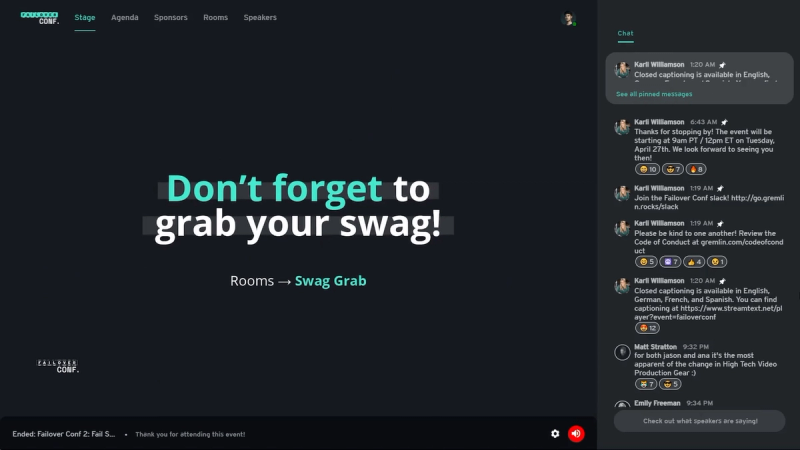
Here are some examples of top-of-the-funnel event objectives:
1. Thought-leadership
✅ Specific goal: Become the industry thought leader for attendees on X topic.
⏳Measure by: Tracking the number of resources downloaded, sessions viewed, and questions asked at both the event and attendee level to determine your overall engagement rate.
2. Attendee engagement
✅ Specific goal: Keep attendees engaged and actively participating in the event.
⏳Measure by: Tracking the average time in-event per user and the number of touchpoints made by each attendee. These can include points for every message sent, comment made, poll answered, booth visited, link clicked, question asked, and more!
3. Brand awareness
✅ Specific goal: Increase brand awareness among prospects and wider target audience.
⏳Measure by: Tracking social media shares and mentions alongside referrals and increased traffic.
4. Net New Pipeline
✅ Specific goal: Generate X registrations to convert X net new Marketing Qualified Leads (MQLs).
⏳Measure by: Totaling the number of registrations, the number of attendees, and the number of attendees who convert to MQL status post-event.
5. Increase global reach
✅ Specific goal: Expand event reach from the US into Europe.
⏳Measure by: Tracking geographical data of both registrants and attendees.
👉🏼 Check out how the all-star event team at Waylay IO met their thought-leadership goals through one unmissable launch event.
Middle-of-funnel event goals
If your prospects have already engaged with your top-of-funnel content and are still sticking around for more, they’re likely pretty serious about solving their problem.
From here, you’re ready to help usher them through the middle of the funnel, a.k.a the evaluation stage.
A stellar mid-funnel event will provide an educational deep-dive into possible solutions to pain points, credible and research-based insights, and proven tips and tactics to help attendees evaluate their options.
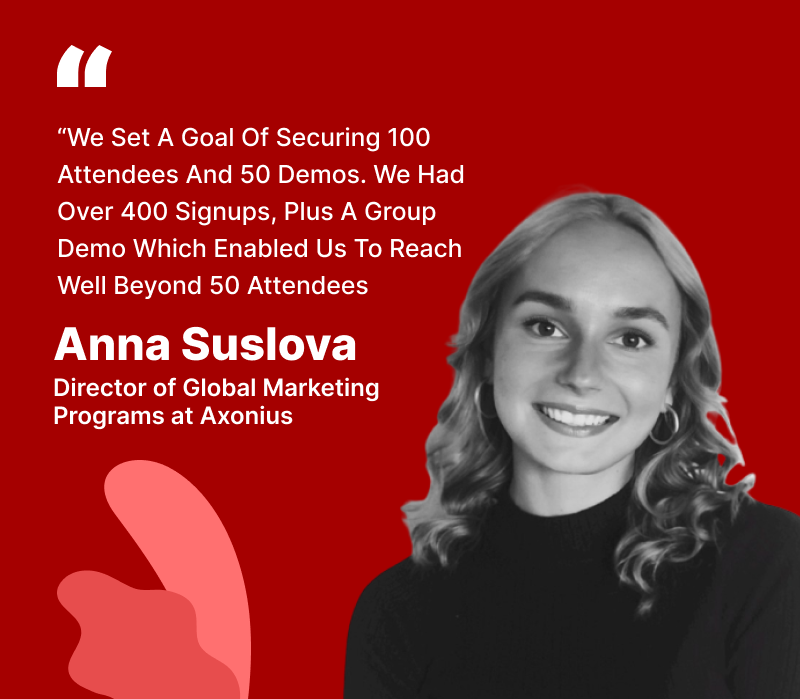
This means you can now shift your event strategy to include an open discussion of your product or solution while learning more about how your audience can benefit from it:
1. Sales conversations
✅ Specific goal: To facilitate X number of 1:1 sales conversations OR for X% of attendees to participate in a sales conversation.
⏳Measure by: Tracking attendee actions within the event — which attendees schedule sales convos, direct message reps, ask product-related questions, etc.
2. Demos
✅ Specific goal: To deliver X number of demos OR for X% of attendees to engage in a sales-led demo.
⏳Measure by: Tracking demo booth attendance and time spent within the booth.
3. Personalized follow-ups
✅ Specific goal: To collect key account-level insights to craft personalized follow-up campaigns.
⏳Measure by: The number of touchpoints captured, follow-up conversion rate, and MQL to Sales Qualified Lead (SQL) rate.
👉🏼 Acing the post-event follow-up is crucial. Want insider tips on how to craft those need-meeting convos? Don’t miss our guide to post-event follow-up.
Bottom-of-funnel event goals
Decision time. By this stage, it’s all about sealing the deal and bringing home the win.
That’s why bottom-of-funnel events tend to be focused on solidifying trust with prospects, proving once and for all that you can walk the walk — and that you can do it better than the competition.
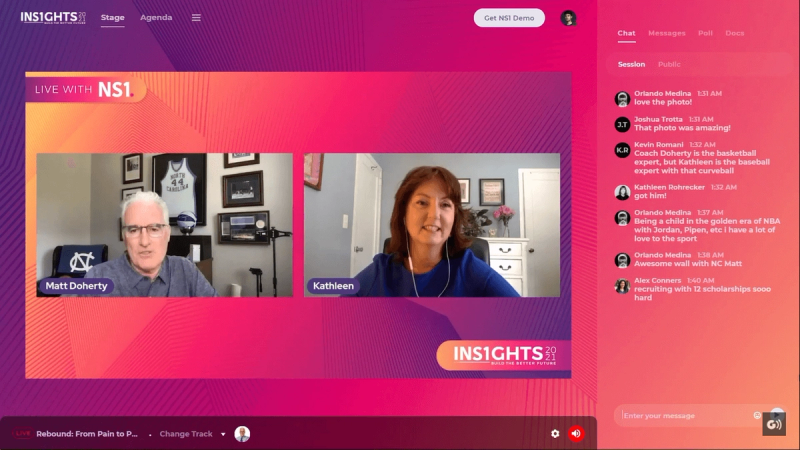
Find out how NS1 seamlessly transitioned to virtual events while maintaining their event program’s revenue-generating position.
By tracking these four event goals, you’ll be able to prove that events really are the ultimate closing tool:
1. Revenue
✅ Specific goal: Generate X amount in contracted deals OR convert X SQLs to closed-won status.
⏳Measure by: Integrating your client relationship management (CRM) software with your virtual event platform to track the end-to-end attendee journey, including when they close, what their contract value is, and what attribution you can claim.
2. Return on investment (ROI)
✅ Specific goal: Achieve an event ROI of X%.
⏳Measure by: Calculating your total event revenue divided by your event expenses. But event ROI can’t be measured on closed-won attribution alone. You can also track attendee touchpoints, hone in on Influenced pipeline data and assess the total potential of net new leads your event has brought in.
3. Customer experience
✅ Specific goal: Improve Net Promoter Score (NPS) by X points OR achieve X number of ‘excellent’ survey responses.
⏳Measure by: Conducting an NPS survey or utilizing your own survey to assess the attendee experience.
4. Pipeline velocity
✅ Specific goal: Improve pipeline velocity by converting X% of MQLs to SQLs OR SQLs to closed-won in less than X amount of time.
⏳Measure by: Tracking all attendees’ and non-attendees’ journey through the sales cycle and assessing the difference in time taken to reach closed-won status.
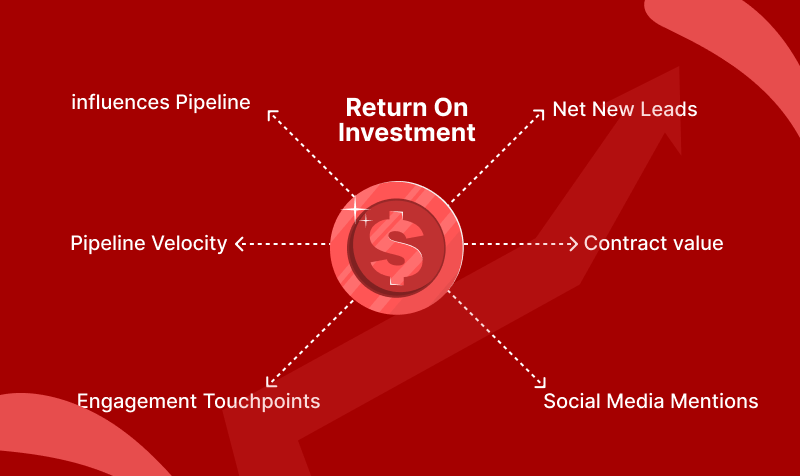
🌟BONUS: Goals and objectives for customer events🌟
The sales cycle is over, and you’ve waved your prospect off into the blissful land of account management. But that’s hardly the last you’ll hear from them!
With events as part of an account-based marketing (ABM) strategy, customer success is everything.
Here again, online events can be a gamechanger when it comes to key marketing and sales goals, including:
1. Upselling
✅ Specific goal: Upsell X% of existing clients at new product launch.
⏳Measure by: Tracking eventual upsell sales from event attendees through your CRM.
2. Renewals
✅ Specific goal: Ensure X% of existing clients renew their contract post-event.
⏳Measure by: Tracking renewal status in the following weeks/months.
👉🏽 Learn how the event marketing team at Alyce uses virtual gifting events to increase client retention.
Ready. Set. Goal.
In the fast-paced world of event marketing, goal-setting is crucial.
But it can also be a surprisingly subjective task. Every company, department, and team member will have different views on what’s a priority and what isn’t.
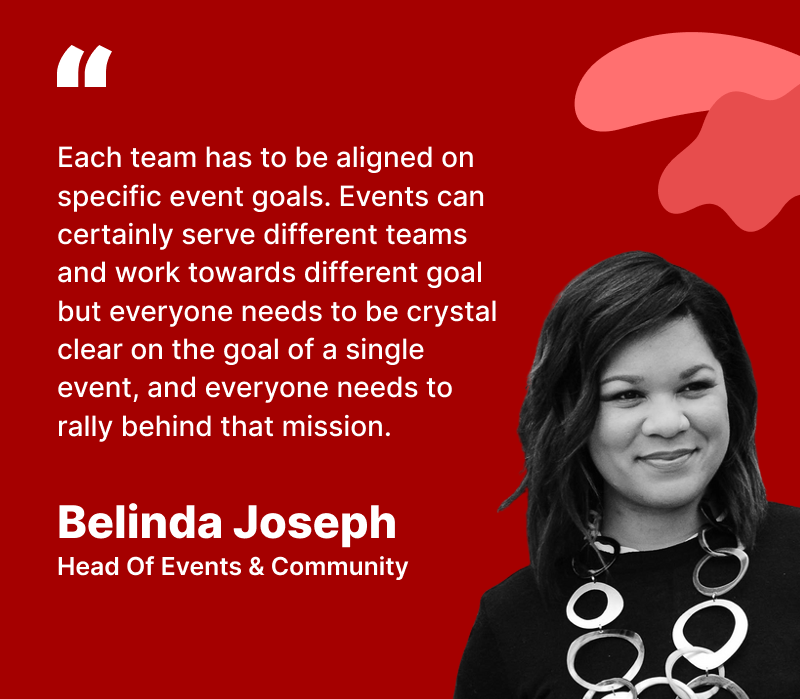
At Goldcast, we can't tell you which goals to choose for your digital events, but we can help you measure the attendee data that matters most.
With the ability to track your event goals in real-time and integrate your event platform with the rest of your marketing tech stack, you can ensure every event proves its value.

Stay In Touch
Platform
Resources
Company
Community
© 2025 Copyright Goldcast, Inc. All rights reserved.



 Upcoming Events
Upcoming Events Event Series
Event Series On-Demand Events
On-Demand Events

